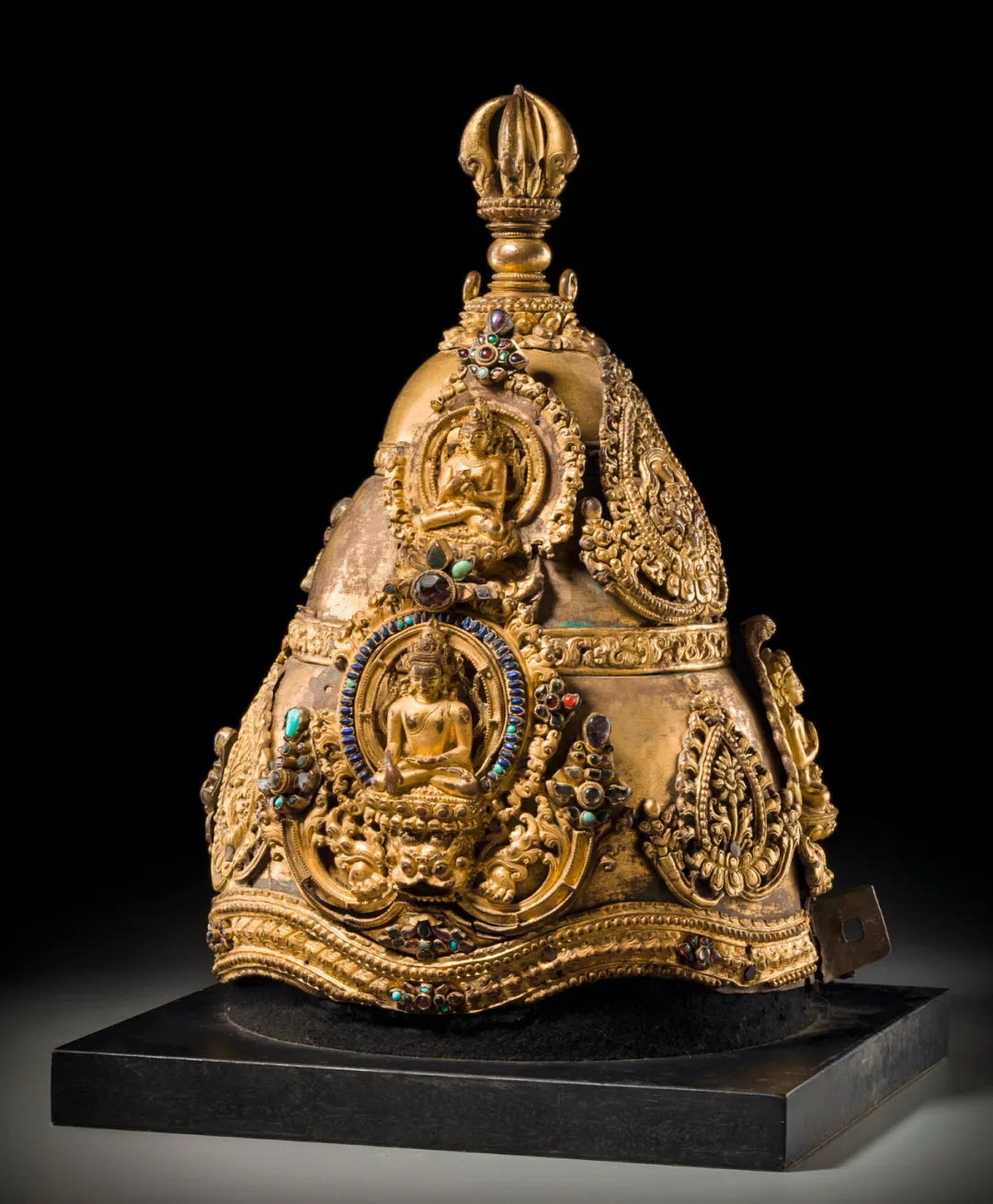
The Holy Helmet of Vajra Riding ▎The Hidden Light of Wisdom at Dusk
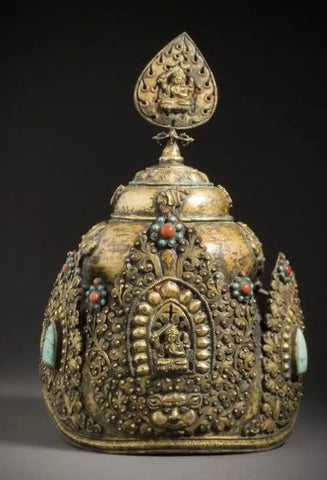
Collection of the Norton Simon Museum
Replacing the original five Buddhas of Vajrayana with the figure of Manjushri Bodhisattva.
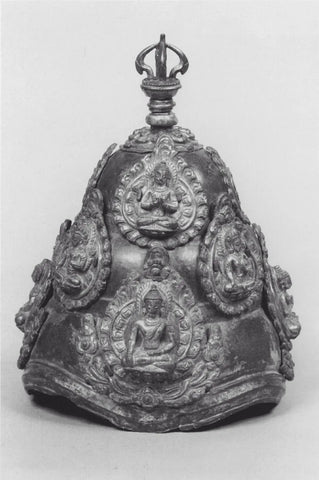
Collection of the Jacques Marchais Museum of Tibetan Art, Kathmandu
Along with the Vajra scepter and Vajra bell is known as
It is also a masterpiece in Buddhist art in Nepal
The holy helmet presents the cosmic laws and world paradigms
From the tantric scriptures
By conducting various rituals and wearing the holy helmet
The masters gain divine authority and officially become "kings of practice"
They communicate with the gods in the ceremonies
Or become vessels for supreme spirits
(Usually referring to the Dainichi Nyorai/Vairocana Buddha)
People mistakenly identify the holy helmet as a war helmet or royal crown
(Even mistaking it for the crown of a Tibetan or North Asian monarch)
This is purely due to a lack of understanding of the context in which the object originated
And the symbolic system of tantric imagery in visual representations.

"Five Buddhas on a Jeweled Altar Displaying the Adamantine Vehicle Helmets", mid-16th century
Collection of The Metropolitan Museum of Art, New York
The altar is adorned with symbols made of jewels in place of the icons of the five Buddhas.
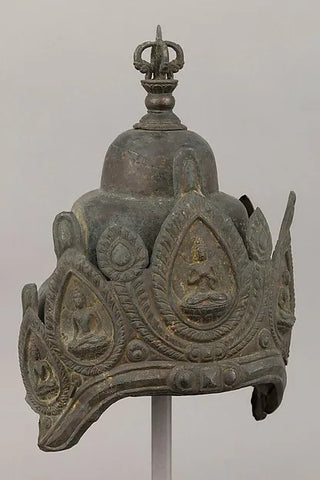
"Five Buddha Bodies, Vajra Chariot Helmet", 14th century
Collection of The New York Metropolitan Museum of Art, Kathmandu
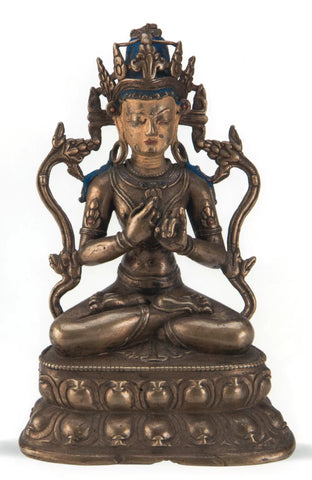
"Vairocana Buddha/Mahāvairocana Buddha", 14th century
Private collection, location undisclosed
There is reason to believe that the sacred helmet originated from earlier esoteric Buddhist crown styles
The unity of the Five Buddhas is further demonstrated

"Five Buddha Mandala on Vajradhatu Helmet", mid-14th century
In the collection of the Metropolitan Museum of Art, Kathmandu
The perfection of the Five Buddha Mandala is utilized in the overall design of the sacred helmet.
At the top of the sacred helmet is a complete vajra.
Carved at the bottom and in the middle of the helmet are the Five Dhyani Buddhas of Tibetan Buddhism.
(The Vairochana Buddha is situated above the other four Buddhas.)
Offering goddesses, various types of mythical creatures, and decorative motifs are adorned around the helmet.
(Themes other than the Five Buddhas exist but are not common.)
It is believed that the sacred helmet is a three-dimensional form of the Five Buddha Mandala.
The helmet represents the universe.
Wearing the helmet bestows authority and lineage.
In some sacred helmets, the vajra is used instead of the Vairochana Buddha.
Originating from the Kathmandu region, this type of sacred helmet is considered a treasure by Buddhist monks in Tibet.
(Examples include the Black Hat Lama or some Nyingma lineage holders.)
These helmets can still be found in Tibetan monasteries and pilgrimage sites.
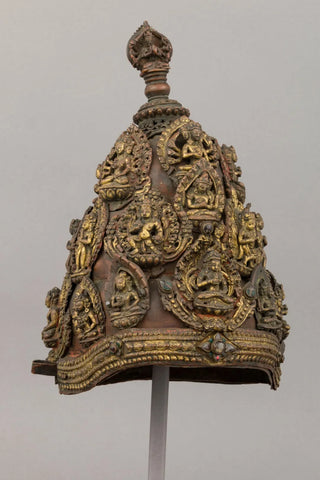
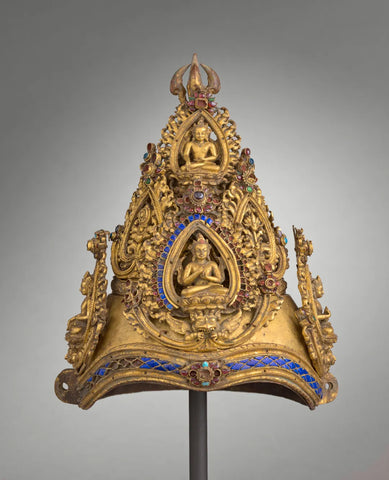
Mid-12th century (approximately 1145)
In the collection of Musée Guimet, Paris, France
Currently the earliest known Vajradhatu helmet (subject to further examination)
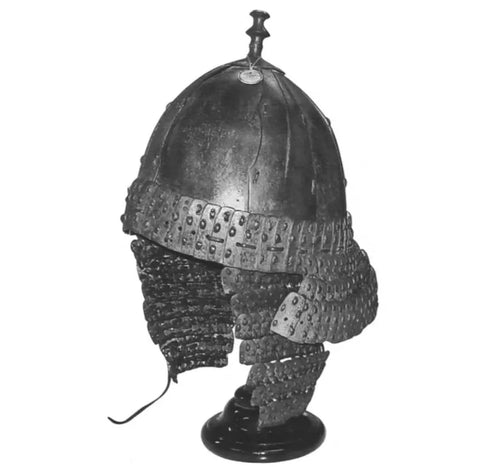
Hidden in the Pitt Rivers Museum in Oxford
By comparing the Tibetan helmet with the traditional helmets of Tibet
We can understand the fundamental differences and unique social functions of the two.
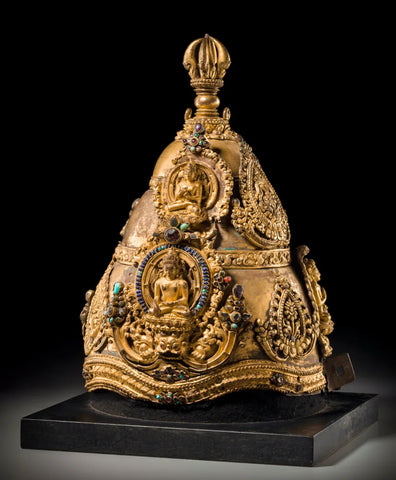
Private collection, Kathmandu
The Master Vajracharya and his family, who possessed the sacred helmet, were considered the supreme group in the social system of the region of Nepal. Among them, the Shakya clan held the highest position.
After a series of rituals, the young men of the family officially became disciples of the Vajrayana teachings and inherited their status. When their heads were aligned with the central axis of the sacred helmet (based on the vajra), the Vajrayana masters received empowerment from Vairochana Buddha.
From that point on, they undertook the responsibility of transmitting the teachings and upholding cosmic order. The sacred helmet was passed down through generations, and various blessing ceremonies never ceased.
They would guide the Buddhist community towards the path of Vajrayana enlightenment.
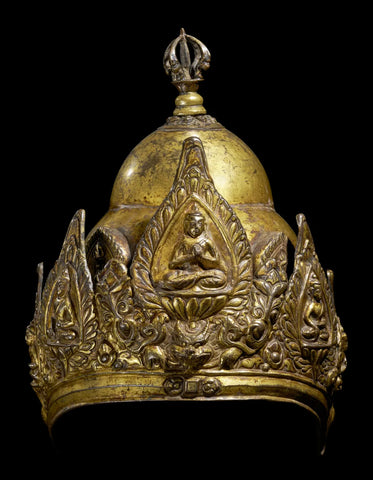
Private collection, Kathmandu
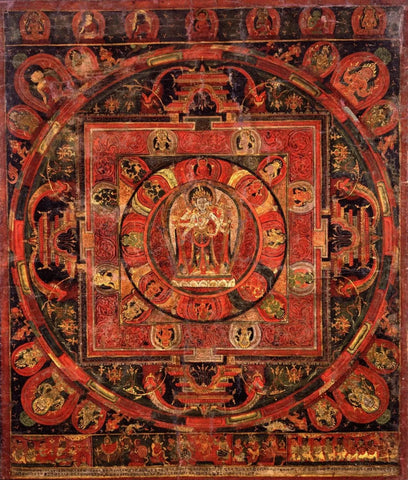
"Avalokitesvara Bodhisattva's Altar City", mid-16th century
In the collection of the Rubin Museum, Kathmandu
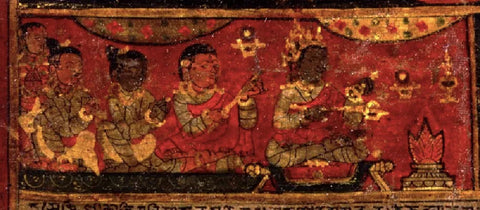
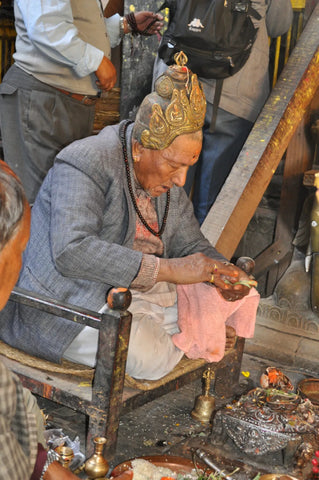
2011, photographed by Kerry Lucinda Brown
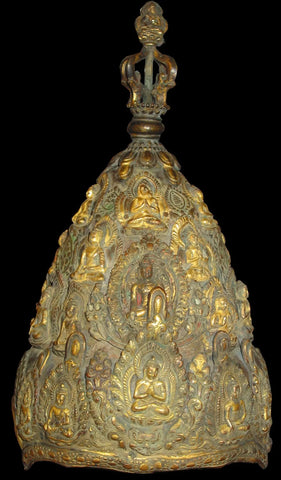
In the collection of the Nicholas Roerich Museum, Kathmandu

